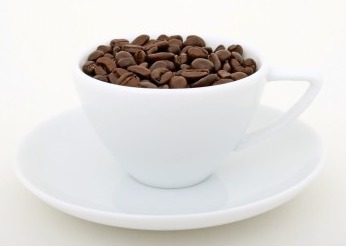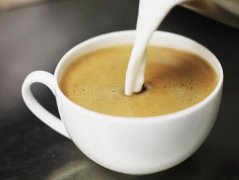A single cup of coffee sold in the world under the name of a country.
Coffee was first introduced to Colombia in 1808 when it was brought by a priest from the French Antilles via Venezuela. Today, the country is the second largest producer after Brazil, with an annual output of 13 million bags of 60 kg each, while Brazil produces 22 million bags a year. The status of coffee in Colombia is illustrated by the fact that all vehicles entering the country must be sprayed and sterilized so as not to inadvertently cause disease and damage coffee trees.

Colombian coffee is one of the few individual coffees sold in the world under the name of the country. In terms of quality, it has won praise unmatched by other coffee. The country is the world's largest exporter of Arabica coffee beans, while Robusta coffee is rarely grown. It is also the world's largest exporter of washed coffee beans (Washedbeans). Compared with other producing countries, Colombia is more concerned with developing products and promoting production. It is this, coupled with its superior geographical and climatic conditions, that makes Colombian coffee excellent in quality and delicious and famous all over the world.
The country's coffee-producing areas are located in the foothills of the Andes, where the climate is mild and the air is humid. Colombia has three Cordilleras mountains (sub-mountain system) running north and south, right into the Andes. Coffee is grown along the highlands of these mountains. The mountain steps provide a diverse climate, which means that the whole year is the harvest season, with different kinds of coffee ripening at different times. And fortunately, unlike Brazil, Colombia doesn't have to worry about frost. There are about 2.7 billion coffee trees in Colombia, 66 per cent of which are planted in modern plantations and the rest on small, traditionally run farms.
The main production areas of Colombia are in the central and eastern mountains. The most important plantations along the central mountains are located in Medellin, Armenia and Manizales, where coffee is of the best quality and high price, characterized by full grains, rich nutrients, rich aromas and moderate acidity. Taken together, the three regions are referred to as MAM (the initials of the major cities in the three regions). Most of Colombia's top coffee for export comes from MAM. Along the eastern mountains, the two best areas are around Bogota and then north around Bucaramanga. Bogota coffee is less acidic than Medellin coffee, but the two are of the same quality.
German imports account for 25 per cent of Colombia's total exports, reflecting the excellent quality of the country's coffee. Coffee grades are divided into Supremo, Excelso and UGQ,UnusualGoodQuality. Klauss coffee in the excellent grade is exported to Germany and Europa coffee is exported to Nordic countries. Excellent grade coffee and top coffee can be bought in most coffee shops. The difference between the two professional regulations is that the coffee beans used in top coffee are larger, and the raw materials are taken from newly harvested coffee beans, so it is easier to ensure the quality of the products. Excellent coffee is usually softer and slightly more acidic than top coffee, but both are aromatic coffee with moderate granules and excellent fruit. Colombian coffee is often described as having a silky taste. Of all the coffees, it has the best balance. It tastes soft, smooth and ready to drink.
Important Notice :
前街咖啡 FrontStreet Coffee has moved to new addredd:
FrontStreet Coffee Address: 315,Donghua East Road,GuangZhou
Tel:020 38364473
- Prev

Coffee knowledge coffee beans can also eat like this
Stir-fry the raw coffee beans; break them into powder with a crusher. If there is no crusher or juicer, you can use heavy and hard things to break the fried coffee beans, the more broken the better; put the coffee powder into water and boil for about 15 minutes. Turn off the fire for a while. After the powder settles, pour out the water and drink it. If there is gauze, you can use gauze to filter it, but after filtering with gauze, you still need to use gauze.
- Next

The steps of making coffee as dessert coffee jelly
Small coffee jelly, another way to taste coffee. A small one, slightly bitter and sweet, with a mellow coffee flavor, the moment it slips into the esophagus, the aftertaste of tequila still echoes in the mouth. Friends and family get together with a chic coffee jelly, which may be a popular dessert. Coffee jelly ingredients: * espresso 60cc * half can of sweet condensed milk * dragon
Related
- Beginners will see the "Coffee pull flower" guide!
- What is the difference between ice blog purified milk and ordinary milk coffee?
- Why is the Philippines the largest producer of crops in Liberia?
- For coffee extraction, should the fine powder be retained?
- How does extracted espresso fill pressed powder? How much strength does it take to press the powder?
- How to make jasmine cold extract coffee? Is the jasmine + latte good?
- Will this little toy really make the coffee taste better? How does Lily Drip affect coffee extraction?
- Will the action of slapping the filter cup also affect coffee extraction?
- What's the difference between powder-to-water ratio and powder-to-liquid ratio?
- What is the Ethiopian local species? What does it have to do with Heirloom native species?

